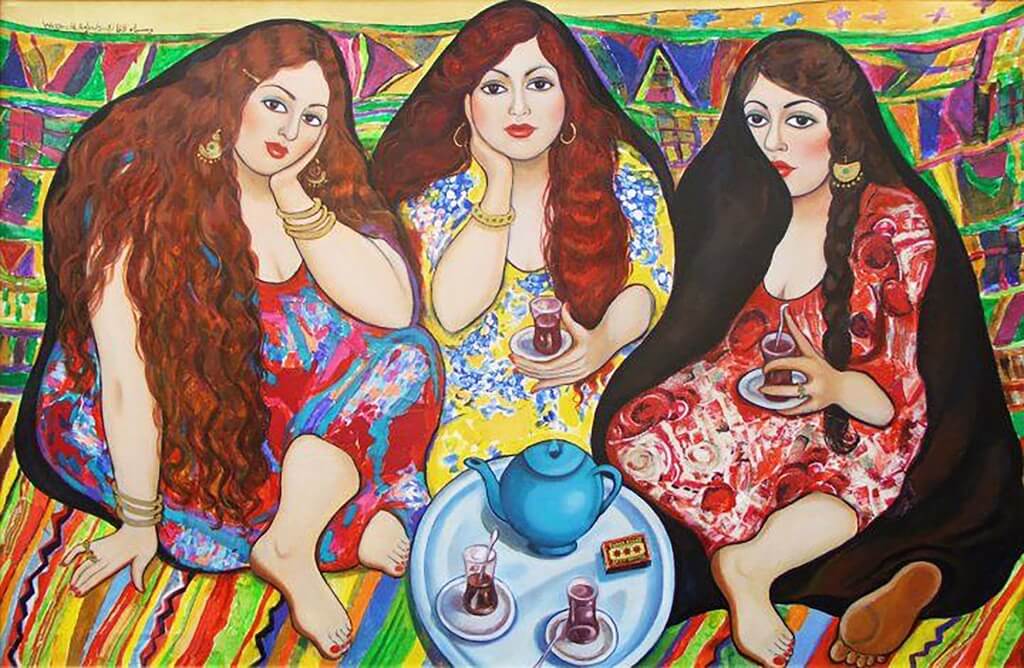
The Unlikely Merchants: Women Antiquities Dealers in 19th Century Baghdad
November 2022 | Vol. 10.11
By Nadia Ait Said-Ghanem
In mid-January 1896, a searing letter written by the Iraqi antiquities dealer Jemilah Hanna Benny began to slowly make its way from Baghdad to Dr. Wallis Budge, the Keeper of Egyptian and Assyrian antiquities at the British Museum in London.
Mrs. Benny was not only angry that there would be a delay in the payment she was expecting from the museum for the purchase of cuneiform tablets she had sent 18 months previously, she had also been told that other dealers would be paid before her. It is this latter piece of news that had infuriated her the most. She writes: “You say besides that I have no right to be paid before other people. Why is that? Is my acquaintance with the British Museum of a fresh date? Am I not a dealer of antiques for the last 18 or 20 years?”

“Three Women and a match” Oil painting by the late Iraqi artist and art critic Wasmaa Alagha (1954-2015). Photograph by AlSafir Alaraby.
Though brief, Jemilah Benny’s remark is invaluable to studies on women’s participation in the antiquities trade in the 19th century. Her statement is clear: she had been selling archaeological artefacts for almost two decades, that is to say since 1876 or 1878. Little is known about women antiquities dealers in Iraq in this period – the study of their activities has attracted little attention in modern scholarship so far. However, the archive of the British Museum where Mrs. Benny’s letter can be read today in the correspondence volumes of the department of Egyptian and Assyrian antiquities, preserves hundreds of letters sent by antiquities dealers who offered artefacts for sale from Baghdad. These documents contain precious information about the identity and life stories of women who not only partook in the trade, but also led it.
Sir Ernest Alfred Thompson Wallis Budge (1857-1934) is key to understanding why antiquities dealers like Mrs. Benny sent thousands of artefacts to the department during his twenty-year keepership (1894-1924). The turning point for the Egyptian and Assyrian collection was 1888, when Wallis Budge was sent on his first mission to Iraq. Among other duties, Wallis Budge had been tasked with finding antiquities dealers who would be willing to send cuneiform tablets for sale to London despite the Ottoman Antiquities Law of 1884 which strictly prohibited the exportation of artefacts. After the law’s adoption, many dealers had turned to smuggling to continue selling abroad, and interested buyers soon realised that the authorities had found themselves practically powerless before these operations.
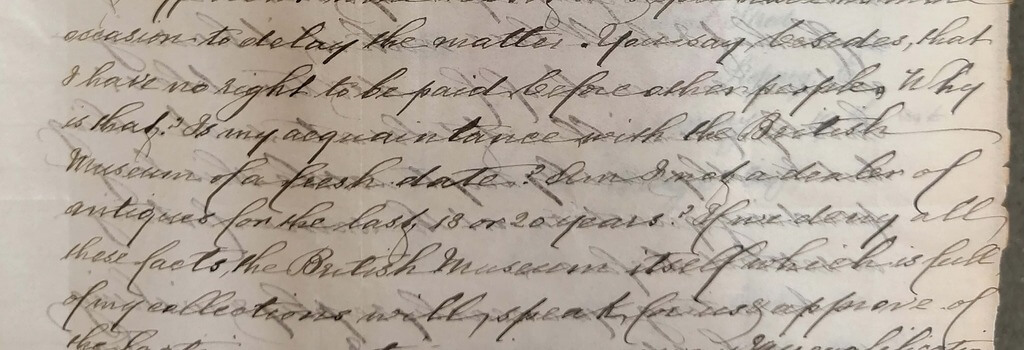
Excerpt of Jemilah Hanna Benny’s letter dated 16 January 1896. Photograph by Nadia Ait Said-Ghanem.
As a result, curators and scholars who worked for museums in Europe and America developed connections with local dealers who could send artefacts directly at their institutions’ doors. Wallis Budge is one of many museum professionals who secured such deals when visiting Baghdad. In his diaries, the occasional antiquities dealer Joseph Svoboda, for example, recounts Wallis Budge’s request in March 1888: “I have sold 5 of my Tablets from Aboo Habba with Cuneyform [sic] inscriptions to Mr Budge, he offered me 6 pounds and I gave them to him, he asked me to send him any of these Collections that I may get direct to him to the British Museum.”
During his keepership, Wallis Budge was not only approached by men, but also by women who were invested in the antiquities trade. Jemilah Hanna Benny was one such dealer. Her correspondence can be traced back to 5 July 1894 when she had written on behalf of her son Namtallah Shamas to explain that because he had had to relocate to Constantinople, she would now be taking over negotiations for the sale of cuneiform tablets and rare manuscripts in their possession. Mrs. Benny’s business dealings with Wallis Budge seemed to have run uninterruptedly for two years. However, by May 1896 their exchanges had come to a halt. Had she perhaps become too irreverent when in March of that year, while chasing her payment, she had written: “Shall I wait centuries for it?”. But as Mrs. Benny began to fade from the archive, another woman, the audacious antiquities dealer Ferida Antone Shamas, was beginning to make her mark on the Egyptian and Assyrian collection.
Mrs. Shamas’ earliest letter to Wallis Budge dates to 1 November 1894, but they were not strangers to each other. They had previously met in 1888 when Wallis Budge had come to her home to purchase cuneiform tablets. It is during this visit that Wallis Budge had invited her to send collections to London. Mrs. Shamas writes: “When you were in Baghdad you were kind enough to say to me when you were at our house that if I had any antiquities if I sent them to you, you would see what you could for me.” Like her counterparts, Ferida Shamas took this business opportunity seriously. But what sets her apart is not only that she partnered with three well-established Baghdad-based antiquities dealers (all men) to increase her sales and profits, she also immediately pushed many of her female relatives and friends to sell to the department.
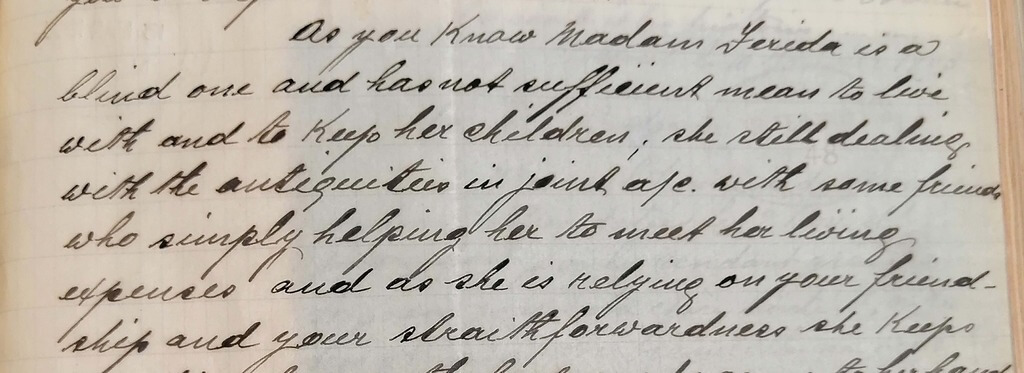
Excerpt of Mr Masmadjyan’s letter of 22 January 1903. Photograph by Nadia Ait Said-Ghanem.
Ferida Shamas first convinced her daughter Susan to sell cuneiform tablets to the British Museum in 1895. Susan, who refers to herself and to her brother Fadlallah as “children” in that year, recounts in her letters that she had been tempted by the trade because she was due to get married in 1897, and she hoped to build a little nest egg in anticipation of settling in her own home. This was also why, in 1897, Mrs. Shamas’ adopted daughter Djemileh Hanna Sayegh had followed Ferida’s entreaties. Djemileh, who was 15 years old when she sent three cases of cuneiform tablets to Wallis Budge, was also due to be married, in 1898. To raise the money to buy their collections, the young girls recount they had sold their jewellery.
By 1896, Mrs. Shamas had persuaded her friend Regina Simon to supply Wallis Budge with cuneiform tablets. Mrs. Simon explains that she too had sold her jewellery to purchase the tablets, but explicitly states she had never engaged in this trade before. Regina Simon may initially have been motivated to make a quick profit, but when her house was destroyed by fire in 1897, she writes the sale would help her survive this personal disaster.
From 1897, Mrs. Shamas’ sister-in-law named Eliza Bolus Kebaba also began to send cuneiform tablets to Wallis Budge. Mrs. Kebaba would come to sorely regret her investment when she learnt from Wallis Budge that many of the tablets she had sent were forgeries, resulting in her selling at a 50% loss.
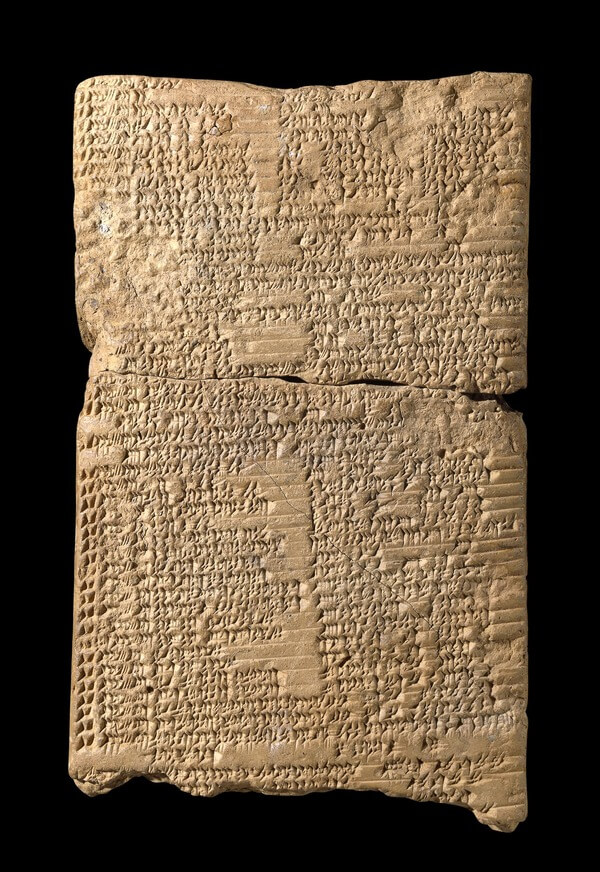
Tablet of dream omens sold by Mrs Ferida Shamas and Antone Samhiry to the British Museum in 1902. BM 96951. Photograph ©Trustees of the British Museum, CC-BY-SA.
Based on these profiles, one wonders whether it was common for women in Iraq not only to trade archaeological artefacts in this period, but also to smuggle collections to sell to foreign institutions? The letters of Susan Hindi, Djemileh Hanna Sayegh, Regina Simon, and Eliza Kebaba show that women who had the means (or the jewellery) could afford to buy and sell artefacts, but it is in Mrs. Shamas’ correspondence that clues about why women entered and persisted in this trade can be found. In a letter dated 15 March 1900, Mrs. Shamas describes that she had been losing her sight since 1890. By 1900, she was not only partially blind, she had also become a widow when her husband Toma Hindi had suddenly died from fever on 6 March, leaving her as the sole provider of three girls and a boy. A letter sent by Mr Masmadjyan, a friend of Ferida Shamas, to Wallis Budge dated 22 January 1903, confirms Mrs. Shamas’ circumstances and her family’s very real needs behind her trading activities. He writes: “As you know Madam Ferida is a blind one and hasn’t sufficient means to live with and to keep her children; she still dealing with the antiquities in joint account with some friends who simply helping her to meet her living expenses.”
For Mrs. Shamas, trading archaeological artefacts may have represented a means to a regular income despite her visual impairment. At a time when women had few employment opportunities, buying and selling artefacts may also have been a socially acceptable way to secure a form of financial independence from a spouse – Ferida Shamas traded independently from her husband for decades. In times of dire straits, the antiquities trade could also become a lifeline. When Mrs. Shamas lost her husband, selling artefacts enabled her to support her family. This situation echoes Jemilah Hanna Benny’s own. She too had been trading independently from her husband, and when she had found herself widowed with two young sons, after the death of her husband Rezooki Antone Shamas in July 1889, Mrs. Benny had also been able to supplement her earnings by selling artefacts.
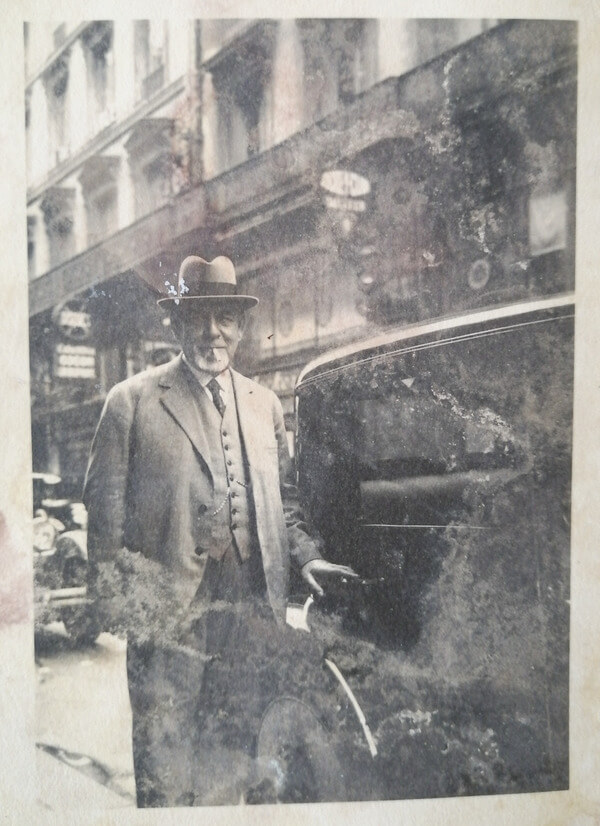
Ibrahim Elias Gejou in Paris, 1930s. Published with the kind permission of I.E. Gejou’s great grandchildren.
The reasons why Mrs. Shamas had decided to smuggle cuneiform tablets can also be gleaned from her letters. She often repeated to Wallis Budge that she wanted to be of ‘service’ to the British Museum. In December 1899 for example, she says: “I want to be of service always to the British Museum, because it is a great honour and it gives me great pleasure.” In speaking thus, Mrs. Shamas was not being effusive or romantic. She had a clear idea of what this ‘service’ would be and she put it in plain terms in a letter dated 3 May 1900: “Mr de Sarzec having found a remarkable statue was very much favoured by his Empire [France], I hope to have the same fate by England with your help.”
Mrs. Shamas’ intention was to find an object so spectacular for the British Museum that in return, she hoped, she would be given some form of recognition or award by the British Government. She had had the idea by seeing how foreign consuls and archaeologists benefitted socially and personally from the discoveries they made, like the French Consul Ernest Choquin de Sarzec (1832-1901) whom she mentions, who excavated the site of Tello (ancient Girsu) from 1877. Hence, Mrs. Shamas was not only dedicated to strengthening the British Museum’s reputation, but also to making her own.
Ferida Shamas’ wish for her work to be awarded may sound somewhat incongruous today, but she had had great foresight. Almost three decades later, in 1926, the Iraqi-French antiquities dealer Ibrahim Elias Gejou, Mrs. Shamas’ young competitor in Paris, was awarded France’s highest order of merit by the French government who made him a Chevalier de la Légion d’honneur (a Knight of the Legion of Honour). The award, which notes Gejou’s work “in the East” and his help in securing a permit to excavate Luristan, Iran, was also given to acknowledge Gejou’s work in enriching France’s national collections. Mrs. Shamas had fully understood the impact antiquities dealers had on museum collections, something that Mrs. Benny had been acutely aware of also when in 1896 she had written “the British Museum itself which is full of my collections will speak for us”.

“The Wedding” Oil painting by the late Iraqi artist and art critic Wassma Alagha (1954-2015). Photograph by Wasmaa Al Agha Paintings.
Although Ferida Antone Shamas supplied the British Museum with rare objects for at least sixteen years, between 1888 and 1904, including a unique cuneiform tablet of dream omens written in the Late Old Babylonian language exhibited today in the British Museum’s galleries, her work was never officially acknowledged. Instead, and to her great sorrow, she fell out of favour. By 1904, she had been replaced. Wallis Budge’s favourite supplier of cuneiform tablets from Iraq was now Ibrahim Elias Gejou (1868-1942), the antiquities dealer mentioned above. Between 1895 and 1940, Gejou would rise to a formidable status – but that is a story for another time.
Nadia Ait Said-Ghanem is a British Academy Postdoctoral Fellow at SOAS, University of London.
Further Reading:
Ait Said-Ghanem, Nadia. When Things Go Wrong: Smuggling Artefacts From Baghdad to London in 19th Century Baghdad.
Ismail, Matthew. Wallis Budge, Magic and Mummies in London and Cairo. Revised Edition, Dost Publishing, 2021.
How to cite this article
Saïd-Ghanem, N. A. 2022. “The Unlikely Merchants: Women Antiquities Dealers in 19th Century Baghdad.” The Ancient Near East Today 10.11. Accessed at: https://anetoday.org/said-ghanem-women-antiquities-dealers/.
Want to learn more?
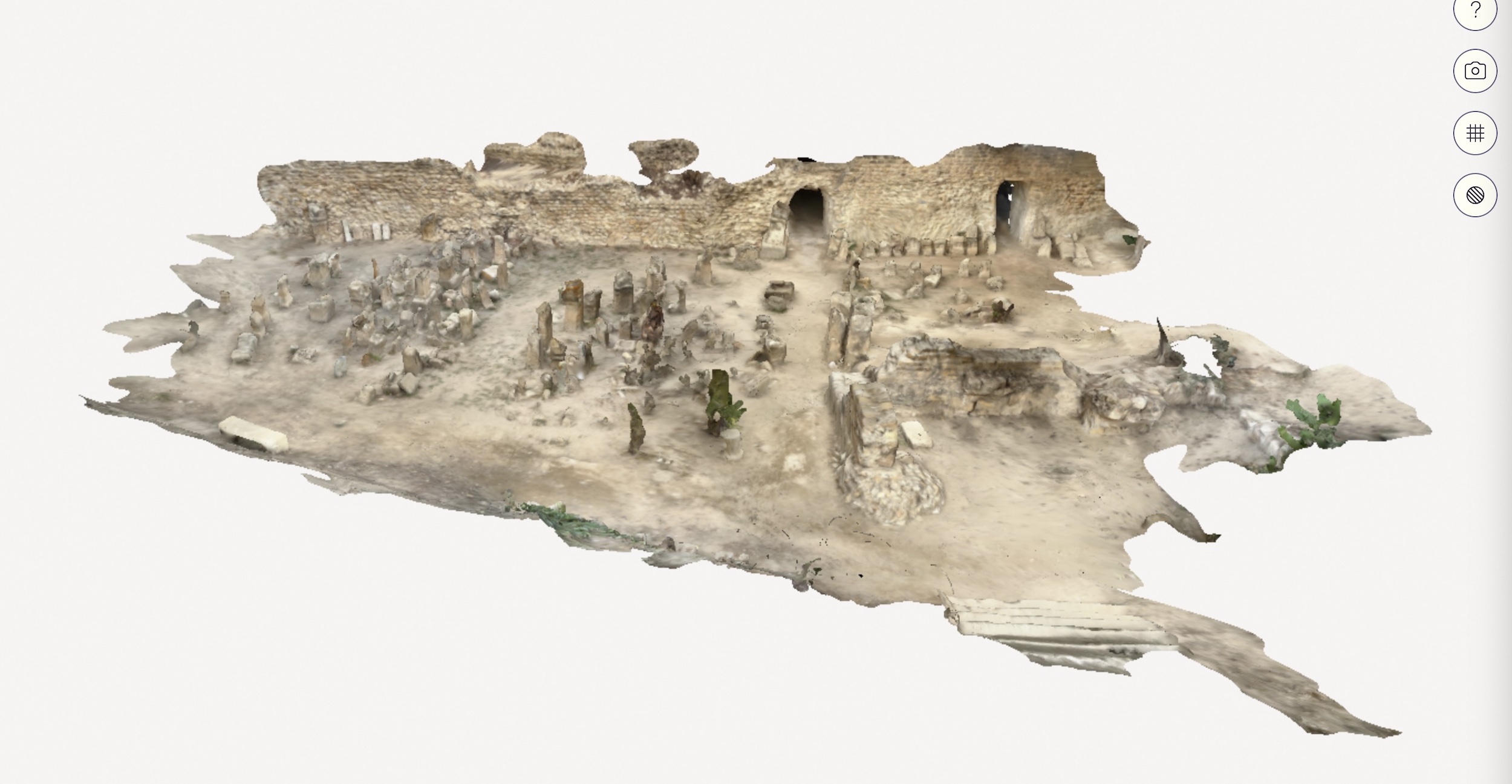
Putting Carthaginian Stelae Back Into Context: The ASOR Punic Project Digital Initiative
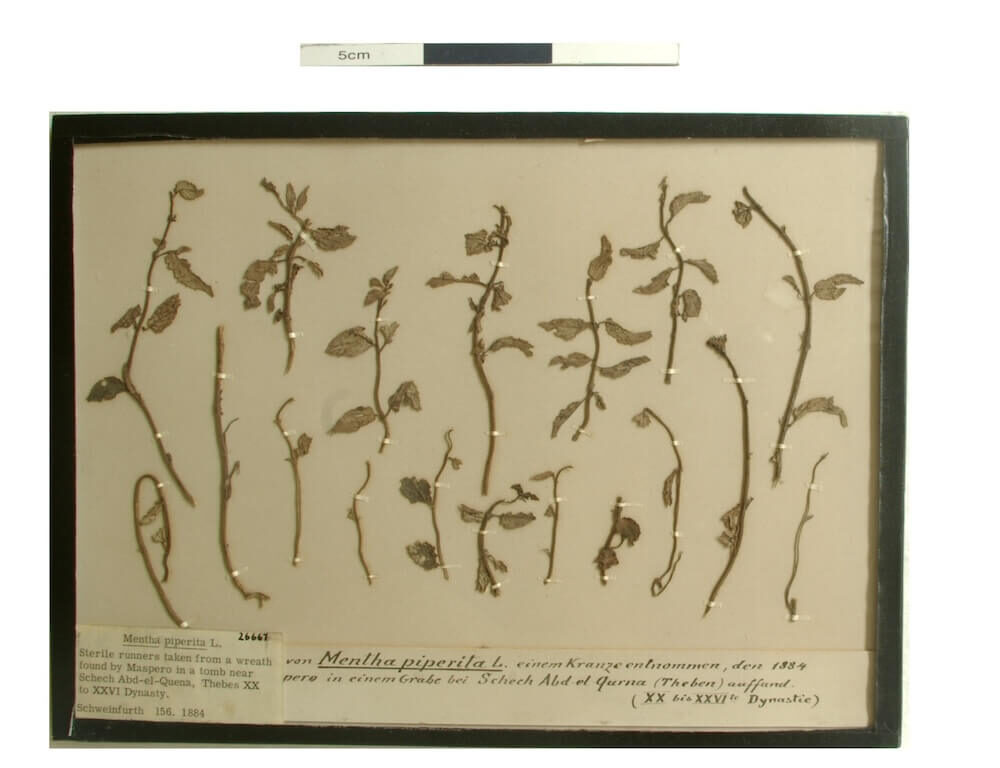
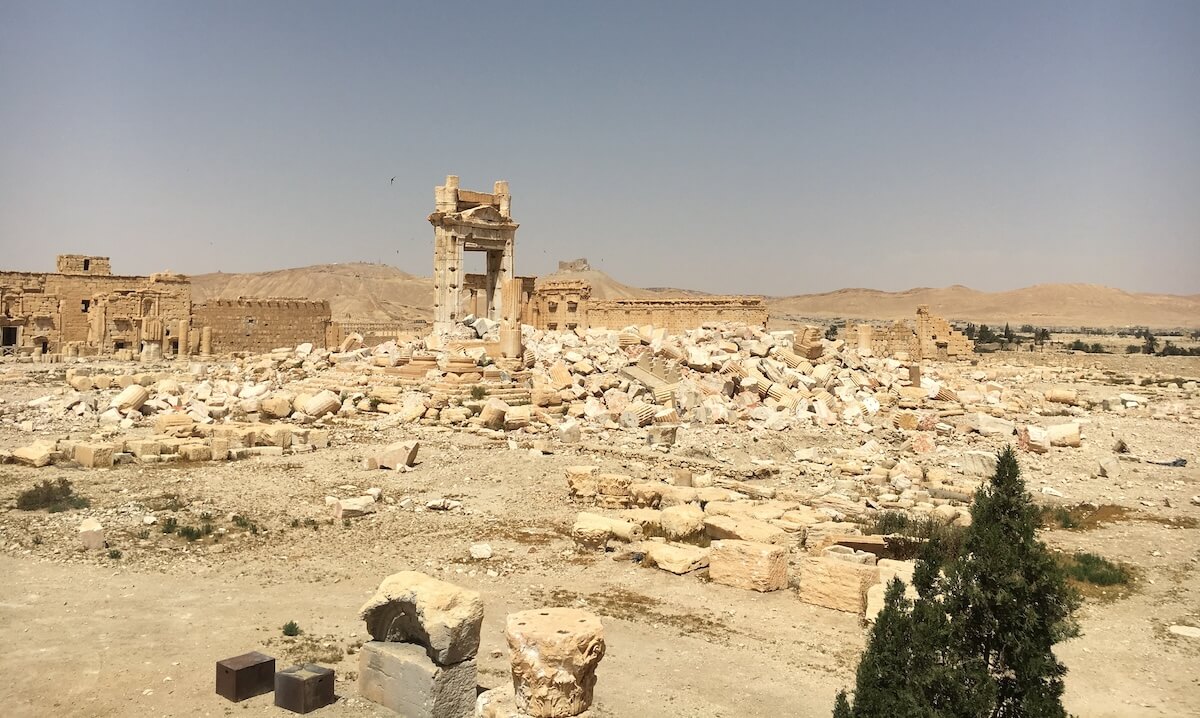
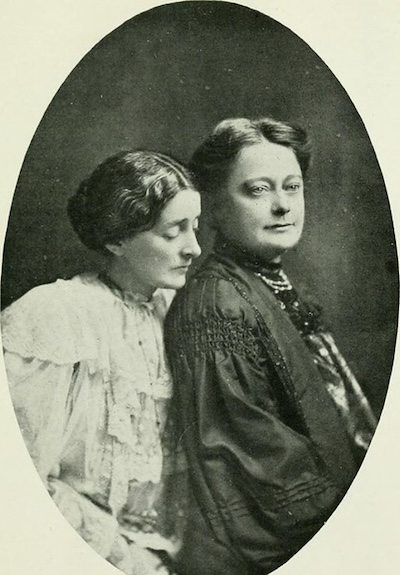

Post a comment